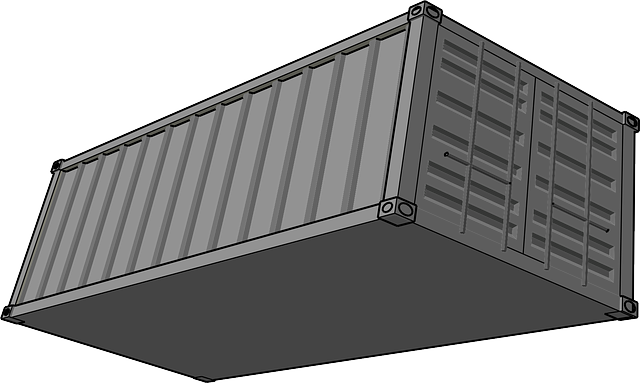Fleet liability coverage is vital for businesses operating fleets, offering protection against claims from accidents or damages, including medical expenses, property damage, and legal fees. However, policies have exclusions for intentional acts, criminal activities, and specific environmental clean-up costs. Regular risk assessments, leveraging data analytics, advanced tracking systems, and proactive measures like maintenance checks and driver training, are crucial for effective fleet liability management, ensuring businesses stay ahead of liabilities while maintaining operational efficiency.
In the dynamic landscape of risk management, understanding and leveraging insurance tools is crucial for businesses, especially in managing third-party liability risks. This article guides you through essential aspects of fleet liability coverage, shedding light on what it entails and areas it excludes. We explore methods to identify potential third-party risks within your insurance portfolio and showcase how specialized insurance tools can streamline risk management. Additionally, best practices for continuous monitoring and mitigation are provided for effective fleet liability coverage.
Understanding Fleet Liability Coverage: What It Covers and Exclusions

Fleet liability coverage is a crucial aspect of managing risks for businesses with a fleet of vehicles. This insurance tool provides financial protection against claims resulting from accidents or damages involving any vehicle within the fleet. It covers various liabilities, including medical expenses, property damage, and legal fees arising from third-party claims. By understanding what is covered, business owners can make informed decisions when choosing their fleet liability policies.
However, it’s essential to recognize the exclusions within these policies. Common exemptions include events involving intentional acts, criminal activities, or willful misconduct of the insured driver. Additionally, certain types of damages like environmental clean-up costs after a spill or contamination are often not covered. Knowing these limitations helps businesses identify gaps and consider additional endorsements or specific coverage options to ensure comprehensive risk management for their fleet operations.
Identifying Third-Party Risks in Your Insurance Portfolio

Identifying third-party risks is a crucial step in managing your insurance portfolio effectively, especially when it comes to fleet operations and potential liabilities. These risks encompass various scenarios where your organization could be held accountable for damages or injuries caused to third parties. For instance, fleet liability coverage is essential protection against claims arising from accidents involving vehicles under your ownership or control. It shields you from financial burdens related to medical expenses, legal fees, and compensation for harm done to others.
By thoroughly reviewing your insurance policies and claims history, you can pinpoint areas of potential risk. This process involves understanding the specific activities and responsibilities associated with your fleet operations. Are there high-risk tasks or environments where accidents are more likely? Identifying these factors allows you to tailor your insurance coverage accordingly, ensuring that you have adequate protection in place. Regular assessments enable proactive management, enabling businesses to stay one step ahead of potential third-party liability claims.
Utilizing Specialized Insurance Tools for Efficient Risk Management

In today’s complex business landscape, managing third-party liability risks effectively is paramount for any organization, especially those operating fleets. Specialized insurance tools play a pivotal role in this process by offering tailored solutions to navigate the intricate web of potential liabilities associated with fleet operations. These tools are designed to streamline risk management, ensuring businesses stay protected against financial losses stemming from accidents, damages, or legal claims involving third parties.
One key aspect is access to advanced analytics and data-driven insights. Such tools enable insurers and business owners to assess risk patterns, identify vulnerable areas, and make informed decisions regarding fleet liability coverage. By leveraging these analytics, companies can optimize their insurance policies, ensuring they are aligned with their specific operational needs. This proactive approach not only mitigates potential risks but also contributes to cost-efficiency in managing third-party liability.
Best Practices for Continuous Risk Monitoring and Mitigation

Regular and continuous risk monitoring is paramount for effective third-party liability management. Organizations should implement robust systems to track and analyze claims data, incident reports, and industry trends. This involves utilizing advanced analytics and data visualization tools to identify patterns and emerging risks associated with fleet operations. By setting up real-time alerts for specific risk triggers, such as sudden spikes in claim frequency or severe injury cases, companies can swiftly respond and implement mitigation strategies.
To enhance fleet liability coverage, proactive measures like regular vehicle maintenance checks, driver training programs, and adherence to safety protocols should be prioritized. Additionally, leveraging technology for telematics and driver behavior monitoring can provide valuable insights into potential risks. Integrating these practices ensures a comprehensive risk management approach, enabling organizations to stay ahead of liabilities and maintain operational efficiency.
By leveraging specialized insurance tools, businesses can effectively navigate and mitigate third-party risks associated with fleet operations. Understanding fleet liability coverage, its nuances, and potential exclusions is a foundational step. Identification of these risks within your existing insurance portfolio allows for strategic adjustments. Continuous monitoring and proactive risk mitigation through best practices ensure that your business remains protected, minimizing financial exposure and maximizing the benefits of fleet liability coverage.
